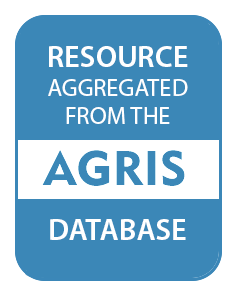What is AGRIS?
AGRIS (International System for Agricultural Science and Technology) is a global public database providing access to bibliographic information on agricultural science and technology. The database is maintained by CIARD, and its content is provided by participating institutions from all around the globe that form the network of AGRIS centers (find out more here). One of the main objectives of AGRIS is to improve the access and exchange of information serving the information-related needs of developed and developing countries on a partnership basis.
AGRIS contains over 8 million bibliographic references on agricultural research and technology & links to related data resources on the Web, like DBPedia, World Bank, Nature, FAO Fisheries and FAO Country profiles.
More specifically
AGRIS is at the same time:
A collaborative network of more than 150 institutions from 65 countries, maintained by FAO of the UN, promoting free access to agricultural information.
A multilingual bibliographic database for agricultural science, fuelled by the AGRIS network, containing records largely enhanced with AGROVOC, FAO’s multilingual thesaurus covering all areas of interest to FAO, including food, nutrition, agriculture, fisheries, forestry, environment etc.
A mash-up Web application that links the AGRIS knowledge to related Web resources using the Linked Open Data methodology to provide as much information as possible about a topic within the agricultural domain.
Opening up & enriching information on agricultural research
AGRIS’ mission is to improve the accessibility of agricultural information available on the Web by:
- Maintaining and enhancing AGRIS, a bibliographic repository for repositories related to agricultural research.
- Promoting the exchange of common standards and methodologies for bibliographic information.
- Enriching the AGRIS knowledge by linking it to other relevant resources on the Web.
AGRIS is also part of the CIARD initiative, in which CGIAR, GFAR and FAO collaborate in order to create a community for efficient knowledge sharing in agricultural research and development.
AGRIS covers the wide range of subjects related to agriculture, including forestry, animal husbandry, aquatic sciences and fisheries, human nutrition, and extension. Its content includes unique grey literature such as unpublished scientific and technical reports, theses, conference papers, government publications, and more. A growing number (around 20%) of bibliographical records have a corresponding full text document on the Web which can easily be retrieved by Google.
Members:
Resources
Displaying 8981 - 8985 of 9579Elaboration d' une methode quantitative et globale d' evaluation de l' aptitude des terres a l' agriculture: application a la Region wallonne (Belgique)
Setting up a quantitative method for a global evaluation of farmland: application to the Walloon Region (Belgium). To counteract the wasteful use of good quality farmlands by other land uses, we have developed a quantitative method for land evaluation. By splitting up soil map symbols, we have drawn up suitabilility maps for cultivation and for grazing. Farming factors, such as slope, closeness to the farmhouses and size of the farmland blocks, were integrated in the soil suitability map with the help of a geographic information system.
To ranch or not to ranch: home on the urban range?
California ranchers in urban Alameda and Contra Costa Counties, and in rural Tehama County, were surveyed to examine effects of increasing development, land use change, and attrition of the ranching community on their commitment to ranching, and to assess land conservation program acceptability. Questions were about practices, reasons for ranching, and what influences ranching's future. Ranchers share much in common. Most enjoy ranching, "feeling close to the earth," living in a "good place for family life," and the camaraderie in the ranching community.
Institutions for shared management of land and water on watersheds: a case study from Sri Lanka
INTERDEPENDENCE OF AGRICULTURE AND TOURISM: QUANTIFYING THE VALUE OF THE AGRICULTURAL WORKING LANDSCAPE IN VERMONT
This study evaluates the impact of the agricultural working landscape on the Vermont tourist industry and state economy. Vermont is known for its scenery, especially its agricultural landscape. It has often been stated that Vermont's tourist industry, which represents 15% of the state's economy, depends upon this special landscape for its comparative advantage in the New England tourism market. However, Vermont's landscape is changing. The number of farms and acres of farmland have decreased significantly in the past several decades.
Elaboration d' une methode quantitative et globale d' evaluation de l' aptitude des terres a l' agriculture: application a la Region wallonne (Belgique)
Setting up a quantitative method for a global evaluation of farmland: application to the Walloon Region (Belgium). To counteract the wasteful use of good quality farmlands by other land uses, we have developed a quantitative method for land evaluation. By splitting up soil map symbols, we have drawn up suitabilility maps for cultivation and for grazing. Farming factors, such as slope, closeness to the farmhouses and size of the farmland blocks, were integrated in the soil suitability map with the help of a geographic information system.


